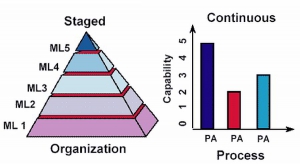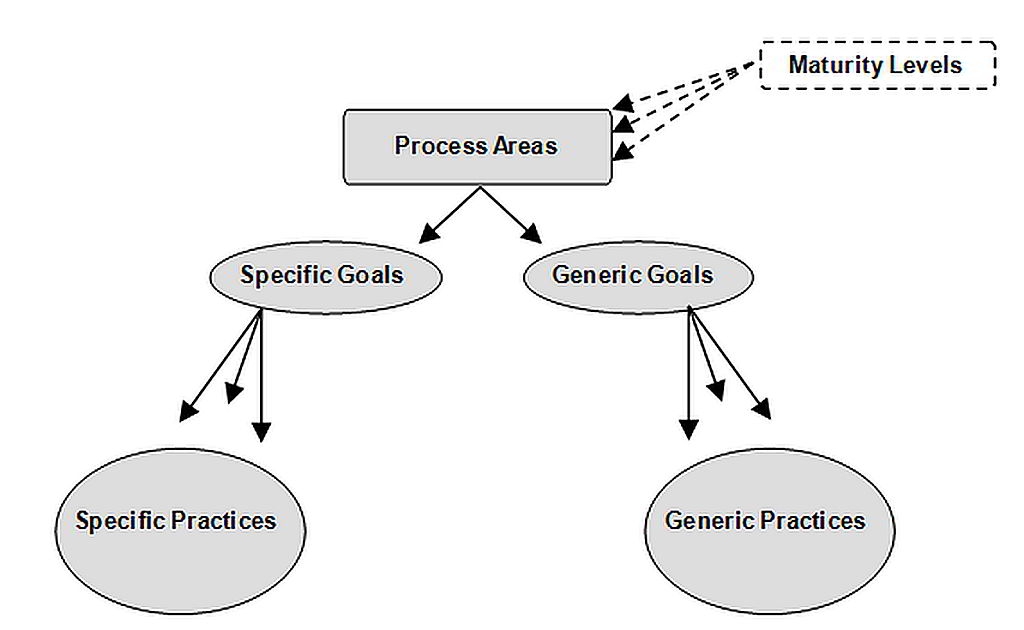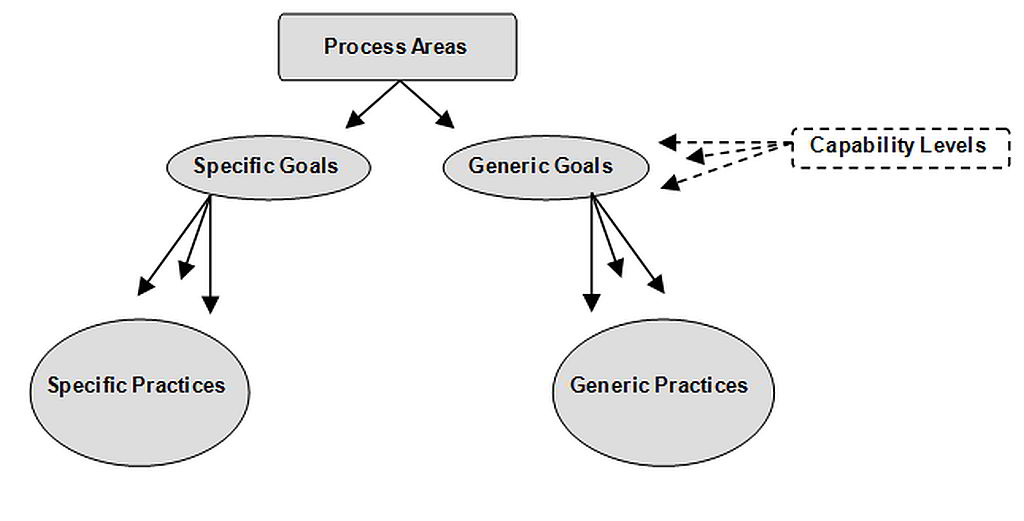Maturity & Capability Representations — What is it?
Staged vs. Continous Representation
Reading Time: 4 minutes Process maturity means that whatever an organisation is doing, it is done in a well-documented way, and everyone knows what is expected of them and performs accordingly. A process is capable if it satisfies its specified product quality, service quality, and process performance objectives. A capable process consistently produces output that is within specifications. Execution of capable process always gives predictable results. Process maturity levels classify organisations according to their ability to control their various processes. Process capability levels classify the performances of (some) processes of a certain process area done by an organisation, organisational department, or project. Process maturity models define reference and assessment schemes for maturity resp. capability levels in detail.The Capability Maturity Model Integration is a process framework to develop, optimise, and assess organisational processes.
Process maturity can have two different representations: staged and continuous. The differences between the structures are subtle but significant.
The staged representation uses so-called maturity levels to characterize the overall state of the organisation's processes relative to the model as a whole.
Maturity levels apply to an organisation's process improvement achievement across multiple process areas. Maturity levels are related to process areas: being mature to foster the processes of a certain process area.
The staged representation is designed to provide a standard sequence of improvements, and can serve as a basis for comparing the maturity of different projects and organisations. Process maturity is usually shown in a staged model.
To be assessed at a higher level, a company must control all elements of the preceding level.
Continuous representation is designed to allow the user to focus on the specific processes that are considered important for the organisation's immediate business objectives, or those to which the organisation assigns a high degree of risks.
Further Readings
- SEI CMMI main Page
- All CMMI models, published by SEI
- CMMI FAQ by Entinex, Inc.
- Mary Beth Chrissis, Mike Konrad, Sandy Shrum:
Addison-Wesley Longman, Amsterdam; 2nd ed. 2006.
- Dennis M. Ahern, Aaron Clouse, Richard Turner:
(SEI Series in Software Engineering). Addison-Wesley Longman, Amsterdam, 2001.
- Ralf Kneuper, Ernest Wallmüller (Hrsg.):
dpunkt Verlag. 2009.
- Malte Foegen, Mareike Solbach, Claudia Raak, Mike Konrad:
Springer, Berlin, 2007.










Leave A Comment